Welcome to our comprehensive guide on the best organic tomato fertilizers! Whether you’re a seasoned gardener or just starting out, finding the right fertilizer can make all the difference in the health and productivity of your tomato plants. In this blog, we will explore various organic fertilizer options that not only enhance growth but also maintain the eco-friendliness of your garden. Our aim is to provide you with expert advice, practical tips, and essential information to help you cultivate the juiciest, most flavourful tomatoes while promoting sustainable gardening practices. Let’s dive into the world of organic fertilizers and take your vegetable garden to the next level!
What is the Best Tomato Fertilizer You Can Use?
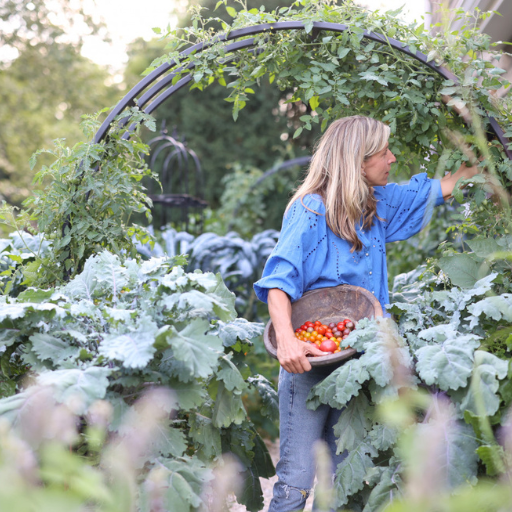
A confusing concept of Fertilizer for Tomatoes
In fact, tomatoes love essential nutrients that are balanced to include nitrogen (N), phosphorus (P) and potassium (K) otherwise known as N-P-K. Nitrogen is good for lush green growth while phosphorus supports strong root and bud development. Potassium assists in overall plant health and disease resistance. Good organic tomato fertilizers should have a combination of these essential nutrients, trace minerals and beneficial microbes. The most frequently used ones include compost, fish emulsion, seaweed extract and bone meal as well as well-rotted manure. The natural fertilizers not only make the soil fertile but also improve its structure thereby helping it to retain water; hence healthy robust tomato plants.
Comparing Organic vs Synthetic Tomato Fertilizers
When evaluating organic versus synthetic tomato fertilizers, certain major considerations need to be made such as nutrient availability, soil health, environmental impact, and long-term effects on plant growth.
- Nutrient Availability: Synthetic fertilizers provide nutrition in an available form for quick uptake by plants resulting into quick results. On the other hand organic fertilizers break down slowly releasing nutrients which ensure more sustained nutrient supply into the soil.
- Soil Health: Soil structure is improved with the use of organic matter contained in organic fertilizers leading to enhanced overall soil health including better water retention capacity and microbial activity. In addition this promotes a higher fertility level around the tomatoes themselves or in general terms within your garden ecosystem. Unlike these natural products artificial fertilisers cause erosion of soils over time if applied carelessly thus reducing their fertility potentiality.
- Environmental Impact: There is no harm done when using bio degradable organic fertilizer because they are derived from nature itself unlike chemically made one that can leach into water bodies causing pollution through nutrient runoff hence endanger living organisms there like fishes through harmful algal blooms.
- Long-term Effects: Slow release property about organics makes them support sustainable plant health and growth for long. Synthetic fertilizers can cause soil salination, which affects the overall productivity of the soil when used excessively.
To summarize, organic fertilizers are recommended for the wellbeing of plants as well as the environment in case of any doubts whereas synthetic ones provide instant results. So depending on your immediate needs and long term gardening plans you have to make a choice between them.
Advantages of Using Organic Fertilizers
Organic fertilizers are beneficial to both gardener and environment in many aspects. These include;
- Improved Soil Structure: by introducing organic matter into it, organic fertilizers enhance soil structure, aeration and water retention that leads to healthy growth of such plants as tomatoes.
- Nutrient-Rich Soil: In addition to provision of basic nutrients slowly over time thus facilitating steady growth without risks nutrient leaching from roots.
- Environmental Sustainability: Being biodegradable due to their natural origin, organic fertilizers are less likely to contaminate water sources contributing since they do not form imbalances in nature.
- Increased Microbial Activity: They contain useful microorganisms found in soils which decay the humus releasing vital elements necessary for vegetation fertility improvement including tomato plants’ health.
- Reduced Chemical Dependency: By using this type of manure reduces reliance upon chemical inputs leading to sustainable eco-friendly gardens; thus minimizing environmental pollution.
Collectively, use of organic fertilizer contributes towards healthier soils, better crop performance and an environmentally friendly way of doing gardening that is sustainable.
How Do You Fertilize Tomatoes for Maximum Growth?
How to Choose the Best Organic Fertilizer
When choosing organic fertilizer that is best for tomatoes, you must consider those with balanced nutrients which are tailored towards their needs. The top three recommendations according to various sources include:
- Compost: Compost has a high content of organic matter, it enhances the structure of soil and acts as a source of nutrients gradually over time. It also increases water retention capacity, promotes beneficial microbial activity and primes the ground for tomato growth.
- Fish Emulsion: Fish emulsion is fast acting and contains high nitrogen levels which makes it perfect for early tomato growth. Leafy growth and vigorous development will be promoted during this important stage before fruiting occurs.
- Bone Meal: Bone meal provides good amounts of phosphorus and calcium necessary for root development and flowering. Phosphorus aids in production of fruits while calcium helps prevent blossom end rot, a common malady among tomato plants.
By using these fertilizers together or at different stages in the life cycle, your tomatoes will receive continued nutrition ensuring maximum growth and yield.
Amount of Fertilizer Required
The amount of fertilizer required by tomato plants depends on their growth stage as well as type of fertilizer being used. Below is a brief guideline from the leading sources:
- Compost: Before transplanting apply compost on top 2-3 inches of soil in abundance. Throughout growing season mulch with compost by putting down one to two inches around each plant base to provide constant feeding.
- Fish Emulsion: Follow package directions (usually 1-2 tablespoons per gallon) dilute fish emulsion accordingly then apply every 2-3 weeks during early stages to promote strong foliage health throughout plant establishment phase.
- Bone Meal: Incorporate one or two tablespoons full into planting hole before transplanting tomatoes. Apply one tablespoon around the base every month or two thereafter for established plants during their vegetative period encouraging flower development along with root support in them during such time..
The quantities should be adjusted depending on the specific needs of your plants and soil conditions, as well as what each company’s instructions state.
Best Time to Fertilize Tomato Plants
Timing is important when it comes to fertilizing tomato plants. Below is a brief guideline from the leading sources:
- Before Planting: Mix compost or any balanced organic fertilizer with soil few weeks before transplanting seedlings. This will help enrich the soil and prepare it for maximum growth.
- Early Growth Stage: After transplanting, use high phosphorus fertilizer to stimulate root development. Robust foliage and root growth can be achieved by applying diluted fish emulsion every 2-3 weeks during the early stages of growth.
- Pre-Flowering: After planting for about 5-7 weeks, change to balanced or slightly nitrogen rich fertilizers to sustain the plant’s growing leaves and stems.
- Post-Flowering and Fruit Set: Apply bone meal or other potassium and phosphorous rich fertilizers such as superphosphate after flowers have formed and fruit starts forming. The fruit ripening process moves more efficiently in their presence; they improve fruit structure while providing other essential nutrients. Keep feeding until end of season at four-to-six week intervals.
By keeping an eye on plant health and adjusting fertilizer application based on specific soil conditions, you can ensure that tomatoes receive proper nourishment at the right times hence experiencing great yields during harvest time.
Which Nutrients Do Tomatoes Need the Most?
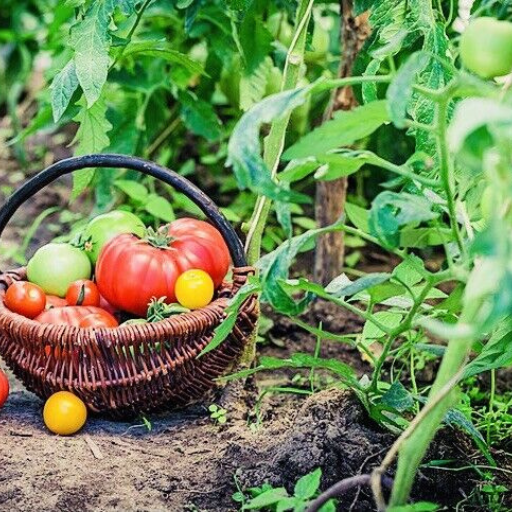
Nitrogen, phosphorus and potassium are major nutrients
Tomato plants need three essential nutrients to grow well which are nitrogen, phosphorous and potassium.
- Nitrogen (N): Nitrogen is vital for leafy growth. This promotes lush green foliage, which is particularly important in the early stages of plant development. Appropriate nitrogen levels establish structure for photosynthesis needed for strong healthy plants.
- Phosphorus (P): Phosphorous is a nutrient essential for root growth as well as flowering. It helps in energy transfer inside the plant. Establishing a solid root system, necessary for nutrient uptake, requires sufficient phosphorous. Moreover, it contributes significantly towards flower and fruit formation.
- Potassium (K): Potassium is important for overall plant health because it aids water regulation, enzyme activation and disease resistance. During fruiting stage, potassium plays a key role in increasing fruit size, quality and taste. It also contributes to stress tolerance of the plant and overall vigor ensuring that harvests are productive.
Balancing these nutrients correctly ensures perfect tomato plant growth and productivity. Soil tests along with monitoring according to the state of soil fertility are crucial factors leading to a successful harvest.
NPK Ratios: What Tomato Plants Need
Nutrient supply through fertilizers should be adjusted to meet specific needs of tomato plants by adhering to NPK ratios which stand for Nitrogen (N), Phosphorous (P) and Potassium (K) concentrations in them. An ideal NPK ratio may differ depending on the stage of growth of tomato plants.
- Early Growth Stage: In this phase of initial growth, balanced NPK ratios such as 10-10-10 or 5-5-5 may be used appropriately. This will provide equal amounts from all three critical macronutrients required at this period in life i.e., root establishment and leaf formative stages.
- Flowering & Fruiting Stage: As the plants move into flowering and fruiting, increasing phosphorus and potassium ratio is beneficial. 5-10-10 or 8-16-16 combinations maintain enough nitrogen supply for healthy leaves as it allows flower formation and fruit development.
Keeping track of soil nutrient levels and adjusting the NPK ratios to match the stage of a plant helps tomato planta obtain the right nutrients at the right time ensuring healthiness and high yield.
Adding Micronutrients
In addition to macronutrients essential for plants provided through NPK ratios, there are other micronutrients that tomatoes need to thrive. Some of these important micronutrients include Calcium (Ca), Magnesium (Mg), Iron (Fe) which play major roles in plant metabolism and general health.
- Calcium (Ca): Calcium is necessary for cell walls formation hence preventing disorders like blossom end rot. A consistent supply during fruit development is important.
- Magnesium (Mg): Mainly involved in production of chlorophyll, magnesium is essential for photosynthesis. Symptoms of this deficiency include yellowing leaves with green veins.
- Iron (Fe):Iron also known as Fe or Ferrum plays important role in enzyme function and chlorophyll synthesis. In young leaves iron deficiency typically results in interveinal chlorosis.
Supplementing with these micronutrient s includes products like bone meal which contains calcium, Epsom salts rich in magnesium or chelated iron among others. It would be possible to guide appropriate supplementation by regular soil tests and monitoring plant health so as to have a well-rounded nutrient profile that supports strong growth & fruiting tomatoes.
What’s the Best Way to Apply Fertilizer to Tomato Plants?
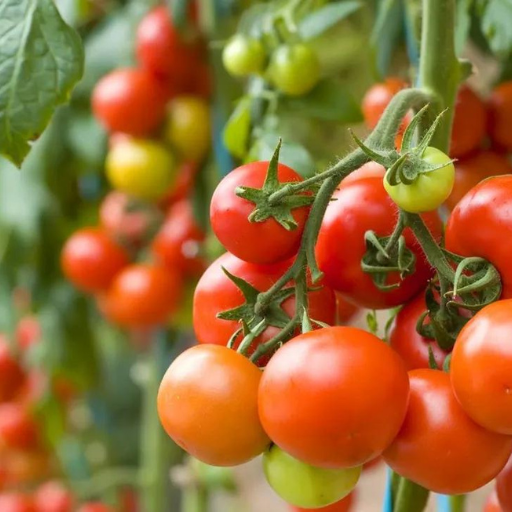
Choice between Granular and Liquid Fertilizers
Various factors such as the growth stage of the plants, ease of application, and nutrient availability need to be considered when choosing between granular and liquid fertilizers for tomato plants.
Granular Fertilizers:
- Ease of Use: It is easy to use granular fertilizers as they can be mixed with soil at planting time or spread on top of soil.
- Slow Release: Often these release nutrients gradually thus ensuring long term maintenance of soil fertility.
- Cost-Effective: Bulk storage and less cost-effective.
Liquid Fertilizers:
- Quick Nutrient Uptake: Quick absorption by crops makes liquid fertilizers an appropriate means to give them a rapid shot of nutrients, especially during flowering and fruiting stages.
- Precise Application: This allows for more exact control over nutrient application making it easier to feed your plants according to their needs.
- Frequent Use: Compared with their granulated counterparts, they will sometimes require more frequent applications because nutrients can easily get washed off soils faster.
Both types of fertilizers have their pros and often a combination of the two can be used in order to maximize tomato plant health and productivity. The solid nutritional base in the soil is provided by granulated fertilizer while liquid ones meet immediate crop needs during each season.
Slow-Release Fertilizers and Their Benefits
Many advantages are associated with slow-release fertilizers that offer consistent supply of nutrients over a period for both farmers and plants. These kinds dissolve slowly so that a regular slow food source is always available to ensure low chances of nutrient leaching from acid rain or overuse hence balanced diet is given throughout the year. Steady release helps maintain even growth, improve plant health, reduce need for frequent fertilizer applications. Also, sustainable gardening practices are promoted by slow release fertilizers that minimize cases like excessive manure application leading o water ways hence becoming one eco-friendly choice among other green gardeners’ options.
Role Played By Organic Matter in Tomato Gardens
To attain healthy productive tomato gardens, organic matter plays a significant role. It improves the soil structure for easier absorption of nutrients and moisture by the plants. Soil organisms are increased through the addition of compost, manure or leaf mold which helps in nutrient cycling and control diseases that affects crops. In addition, it mitigates soil compaction and promotes air circulation leading to sound root systems and stronger plants. Incorporating organic matter regularly into tomato gardens guarantees higher yields and better quality fruits for the farmers who desire to acquire them.
How Often Should You Fertilize Your Tomato Plants?
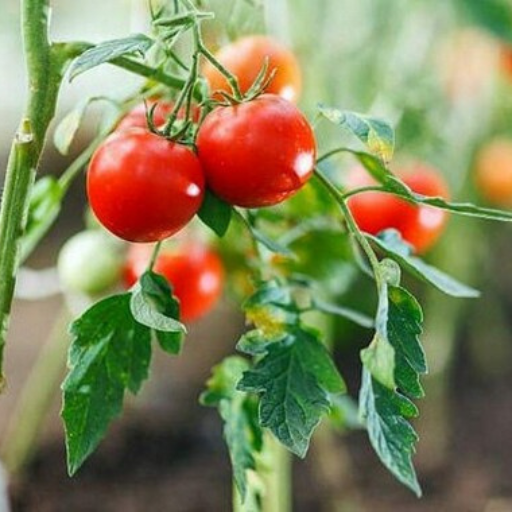
Fertilizing Young Tomato Plants
Every evening I fertilize young tomato plants, I am careful to know whether the soil is already nutrient rich and has been prepared with manure or compost. I wait until the seedlings have their initial set of true leaves before applying a balanced water-soluble fertilizer. To avoid overwhelming these tender plants, I dilute it to half-strength and apply it every 10-14 days for constant growth. As soon as the plants are well established and start flowering, I change over to a higher phosphorus and potassium nutrient levels in the fertilizer used on them thereby promoting strong root development and fruiting. This routine ensures that my young tomato plants receive good nutrition without being over-fertilized.
Maintaining Fertilization During the Growing Season
In order to maintain fertilization during the growing season, my schedule is consistent according to stages of plant development. After my tomato plants are established, I continue using balanced fertilizer every three-four weeks. In order to dilute it properly and how much should be applied per time according to package directions from manufacturers, I make sure that my water-soluble fertilizer is done correctly by following it. When they begin flowering and bearing fruits, I switch to transplant shock remedies with more potassium content which encourages fruit development. Furthermore, at various times when yellowing leaves manifest themselves in these crops due to lack of nutrients such as nitrogen; this will be adjusted accordingly through application of nitrogen-rich composts like well rotted manure or commercial nitrogenous fertilizers that come in form of urea or ammonium nitrate. By monitoring my tomato plants and providing them with the right nutrients at the right time, I ensure robust growth and a bountiful harvest.
Adjusting Fertilization Based on Plant Health
If there is any deficiency in nutrients as observed in leaf symptoms in tomato plants, then adjustment must be made based on particular signs observed. For instance, yellowing leaves might indicate nitrogen deficiency which can be cured by application of a high nitrogen fertilizer or compost. On the other hand, purpling of leaves could imply that more phosphorus is needed in the soil thus a higher phosphorus fertilizer may be necessary. In addition, calcium nitrate and crushed eggshells can help resolve blossom end rot as it is often caused by calcium deficiency. By closely observing my plants’ health I am able to make precise changes to their fertilization program, thereby keeping them healthy and productive throughout the growing season.
Frequently Asked Questions (FAQs)
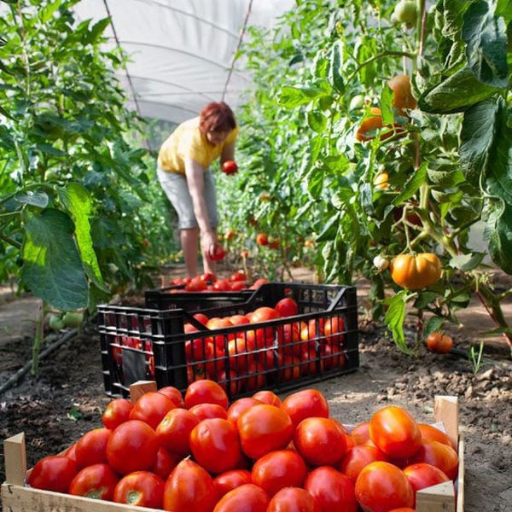
Q: What are the benefits of using organic gardening practices when growing tomatoes?
A: Employing certified organic fertilizers like Tomato-tone in organic gardening, for instance, ensures that harmful chemicals are avoided and soil health as well as sustainability is boosted. The best for environment, this can make highly nutritious and tasty tomatoes.
Q: Is there a specific time when it’s best to use tomato tone fertilizer?
A: Yes. Best times to apply tomato tone fertilizer is during planting and then every four to six weeks throughout the growing season. This supports growth and fruit production by supplying nutrients around the plant continually.
Q: Are slow release fertilizers good for tomato plants?
A: For example, slow release fertilizers are good for tomato plants because they help supply nutrients very consistently over a period of time reducing the danger of excessive application of manure in cases where these crops need them most.
Q: What should I look for when shopping for a tomato fertilizer?
A: As you search for a tomato fertilizer such as Tomato-tone Organic Fertilizer, find one that’s explicitly developed for tomatoes and other vegetables. It should have an equal amount or ratio of nitrogen, phosphorous and potassium plus other vital trace elements identified with growth.
Q: How do I use fertilizer like tomato-tone around my tomato plants?
A: To utilize Tomato Tone Fertilizer on your tomatoes put the recommended quantity around each plant base; gently mix into the ground being careful not to disturb any roots while watering well so as to enhance efficient nutrient absorption.
Q: What are the benefits of using a great organic fertilizer for tomatoes?
A great organic fertilizer benefits tomatoes by improving soil health, reducing environmental damage, and making healthier more productive plants. They provide slow- release nutrients which guarantee constant availability over an extended period leading to vigorous growth.






